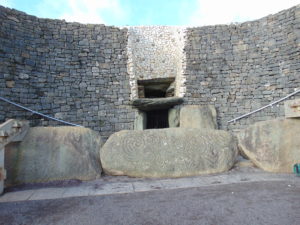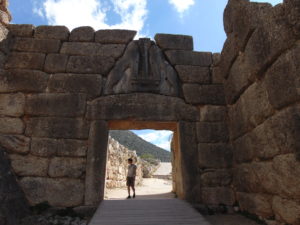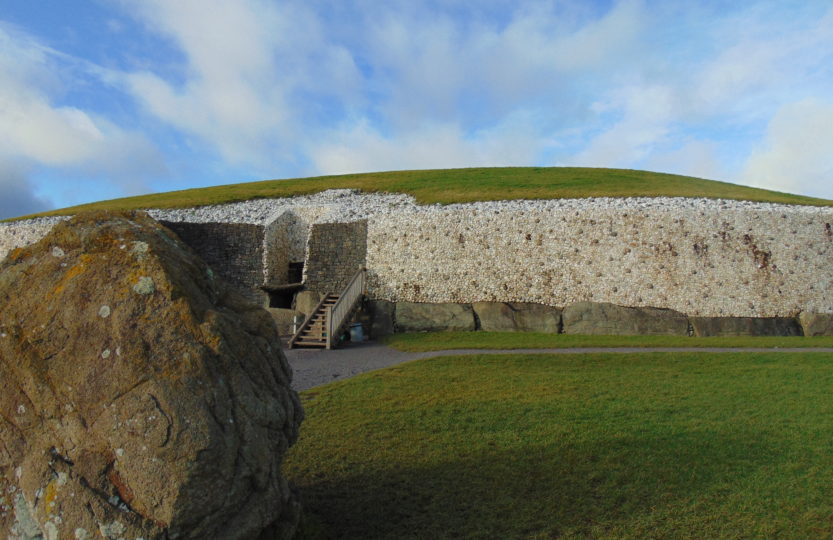I admit I have an obsession. Ancient megalithic structures, such as Göbekli Tepe in the Southeastern Anatolia Region of Turkey, have fascinated me since its discovery in 1994. And although many common structures are visited daily, there are 3 megalithic sites that should not be overlooked.
1. Newgrange, County Meath, Ireland
Located just an hour northwest of Dublin (via the M1 and N2), is the World Heritage Site known as Newgrange. This astounding monument, built around 3200 BCE, is older than Stonehenge and the Pyramids, and is yet another testament to the astronomical knowledge of our ancient ancestors. I arranged my trip to Ireland around visiting Newgrange and was not disappointed.
Like other celestially aligned structures, Newgrange’s stone age passage way and inner chamber are aligned with the Winter Solstice. Every year, a free lottery is held that allows sixty winners and their guests in the chamber during the sunrise event. I was able to visit Newgrange shortly after the Winter Solstice of 2017. Although initially cloudy and cold, by the time I left the Visitor Center, crossed the pedestrian bridge over the Boyne River, and took the short shuttle bus trip to the site, the sky had cleared and the sun had brightened the day.
A “keystone” with Neolithic art carvings adorns the entrance to the structure, along with 96 other stones that edge the base of the mound perimeter.

Sunlight peering through the rock doorway, lights the narrow 60 foot corridor during the solstice sunrise. Standing in the center of the inner corbelled chamber looking up at the roof, you have to be amazed at the engineering wonder of this structure. After piling rock layers on more rock layers until it could be finished off with a capstone 6 meters above the chamber floor, the structure is still water proof after over 5000 years.
2. The Lion Gate, Mycenae, Southern Greece (Eastern Peloponnese)
Different than most of the ruins that you will see in Greece, the ancient city ruins of Mycenae and its entry gate is one of the oldest in the region. The Lion Gate was the main entrance to the bastion of Mycenae. Built in the 13th century BCE, it is part of the sole remaining piece of citadel wall. Walking up the gravel access pathway, you are flanked on both sides by massive stones said to have been arranged by giants. The pathway narrows at the entrance to the bastion, with two opposing lionesses separated by a pillar, is carved into the header stone above the gate.

On the other side of the entrance, remains of houses, cisterns, storage granary, other public buildings, and the Mycenae palaces can be seen atop the acropolis. I made it to the top where the king’s palace was supposedly located, which was a bit of a hike. The stone walkway (including steps) up the hill might be considered moderate to some, but if taken slow, it was not difficult.
It was at Mycenae that Heinrich Schliemann discovered the golden Mask of Agamemnon in 1876, the same archeologist who began excavations at Troy several years before in 1871. Between the parking lot and the Lion Gate of Mycenae, you can visit the Tomb of Clytemnestra, the wife of King Agamemnon.
3. Temples of Malta
There are actually seven megalithic temple structures found on the islands of Malta and Gozo, small remarkable islands in the Mediterranean Sea south of Italy. Of the five temple ruins on Malta, my favorite is Hagar Qim, built over 5000 years ago (between 3600 – 3200 BCE). With the most perfect view, it is exactly where I would have wanted to build my home to have such exquisite outlooks of the sea. Massive 50-plus ton, 17 foot tall, upright blocks of limestone form the outer walls, with cross-members topping them to create a formidable structure. It is easy to agree with the 17th century Maltese historian, Giacomo Abela, that wrote that the Hagar Qim ruins were evidence that there was a race of Giants on Malta.
Some historians think that the complex was used for fertility rituals. Various clay figures of obese ladies, pottery, and other artifacts can be seen in the National Museum of Archaeology in Valletta. These rather cute, fat lady figures found within the Hypogeum (which was a large 3-story underground necropolis and burial site), and found during excavation of the temple complexes, may be evidence that the Maltese people were either ruled by females or worshiped them.
Driving around on the island for a week was barely enough time to see the temple sites, museums, and Fort Saint Elmo (where numerous movies have been filmed – e.g., Troy, The Da Vinci Code, Murder on the Orient Express, etc.). And just so you are not surprised when you get there, the Maltese drive on the left like in England.



That’s a great point
I’ll immediately grab your rss feed as I can not find your email subscription hyperlink or newsletter service.
Do you’ve any? Kindly permit me recognize in order that I
may subscribe. Thanks.
I have read so many articles regarding the blogger
lovers except this article is really a nice
post, keep it up.
Wonderful views on that!